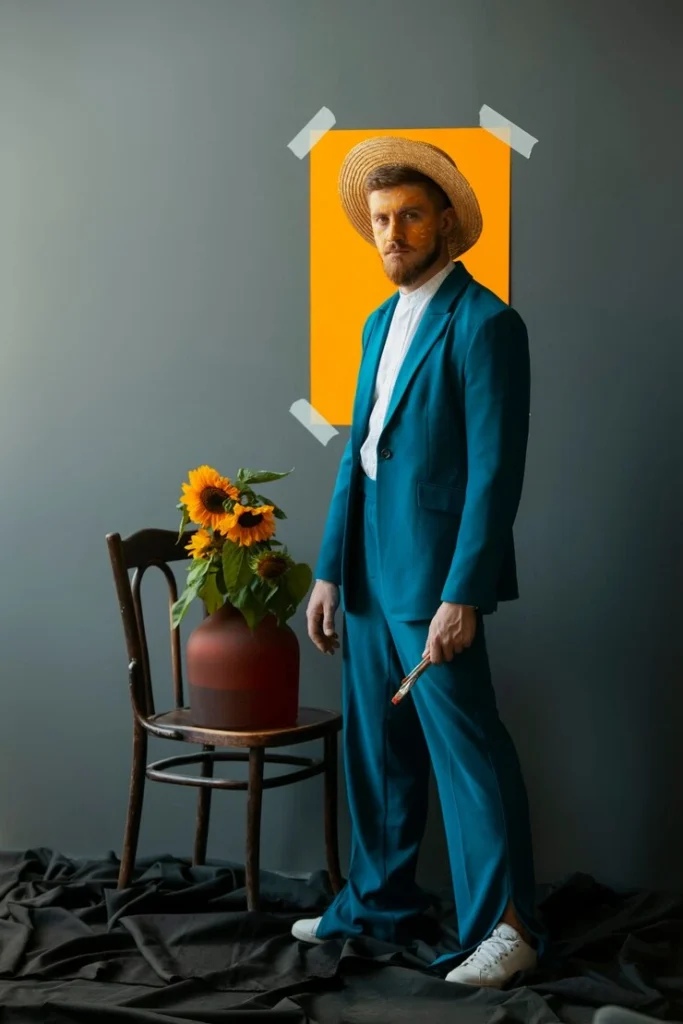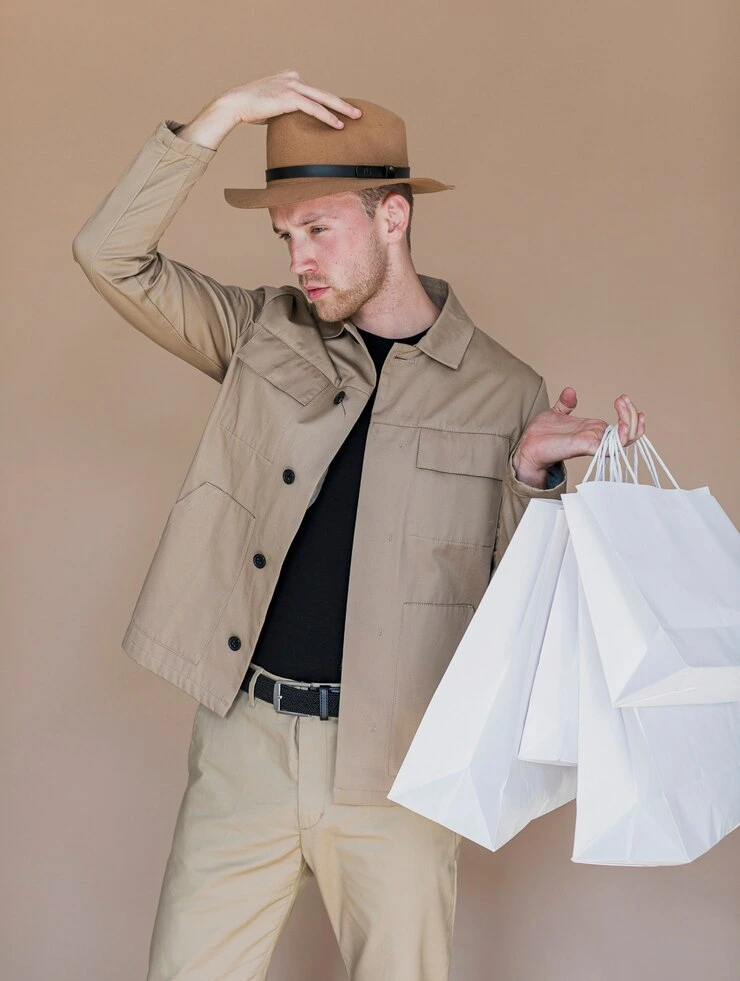In today’s world, where style inspiration is just a scroll away and clothing trends cycle in and out at lightning speed, it’s easy to feel overwhelmed by the sheer volume of fashion choices available. From TikTok hauls to Instagram influencers, we’re constantly bombarded with new “must-haves” and the pressure to keep up with what’s trending. Fast fashion brands capitalize on this cycle, offering low-cost, high-turnover pieces that make it tempting to refresh our wardrobes with every passing week.
But amid the chaos of endless trends and disposable clothing, one essential question remains: what does your style really look like?
Personal style is more than following trends—it’s about expressing who you are, what you value, and how you want to present yourself to the world. It’s the quiet confidence in knowing what works for you, regardless of what the fashion world dictates. In this article, we’ll explore how to define and refine your personal style in a way that feels authentic and intentional, even in an age dominated by fast fashion. From identifying your go-to looks and curating a wardrobe that truly reflects your personality, to learning how to resist the pull of impulse purchases, we’ll guide you through the process of building a style that lasts longer than the latest trend.
Whether you’re just beginning your style journey or looking to reclaim it from the influence of mass-market fashion, this is your invitation to slow down, reflect, and reconnect with what style truly means to you.

The Rise of Fast Fashion and Its Impact on Personal Style
In recent years, the fashion industry has shifted dramatically from a slow, seasonal cycle to an ever-accelerating, trend-driven machine. This transformation has given rise to what we now know as fast fashion—an approach to clothing production and retail that prioritizes speed, affordability, and volume over quality, sustainability, or originality. Major players like Zara, H&M, Forever 21, and, more recently, Shein have revolutionized the way we shop by making it possible to access the latest runway-inspired looks at incredibly low prices. New styles arrive in stores and online every few days, encouraging constant consumption and making yesterday’s outfits feel obsolete by tomorrow.
This endless cycle of production and consumption has done more than just fill our closets—it’s changed our relationship with fashion itself. Where personal style was once built slowly over time, through experimentation and self-discovery, it’s now often overshadowed by the pressure to keep up with fleeting trends. Instead of investing in timeless pieces that reflect who we are, many of us find ourselves buying into styles that are “in” for the moment—only to discard them once the next microtrend rolls in.
The impact of this shift is subtle but significant. With the constant bombardment of new styles on social media, particularly platforms like Instagram, TikTok, and Pinterest, it’s easy to lose touch with our own preferences. Every few weeks, a new aesthetic dominates our feeds—clean girl, coastal grandmother, dark academia, mob wife chic—and we’re encouraged to adopt a new identity with each wave. This can create a sense of style confusion or even insecurity, as we chase after trends that may not suit our personalities, bodies, or lifestyles.
Moreover, the accessibility and low price points of fast fashion often give us a false sense of satisfaction. Buying more can feel like self-expression—but when the pieces we purchase lack longevity or personal meaning, we’re left feeling unfulfilled. Our wardrobes become cluttered, not curated, filled with items that rarely get worn more than once. And slowly, our unique fashion voice is drowned out by mass-produced noise.
It’s not just about aesthetics either—there’s an emotional toll. Constant exposure to “what’s new” can lead to decision fatigue and comparison. You may find yourself wondering, Why doesn’t my wardrobe feel cohesive? Why do I have so many clothes but nothing to wear? These feelings are symptoms of a larger issue: a fashion culture that prioritizes trend-chasing over individuality.
Understanding the rise of fast fashion is the first step in taking back control. When we recognize how it influences our buying habits and perception of style, we can begin to make more mindful choices. We can slow down, reflect, and ask ourselves deeper questions: What do I really like? What makes me feel confident? What story am I telling through my clothes?
In the sections that follow, we’ll dive into how to break free from this cycle, rediscover your true style, and build a wardrobe that reflects you—not just the algorithm.

Defining Your Personal Style: Where to Start
Now that we’ve unpacked how fast fashion can blur the lines of personal expression, the next step is reconnecting with your true style—one that feels authentic, intentional, and sustainable. But where do you even begin when you’re surrounded by so much noise?
The truth is, personal style isn’t about dressing to impress or copying someone else’s aesthetic. It’s about understanding yourself—your lifestyle, values, body, and mood—and translating that into what you wear. It’s the difference between wearing clothes and truly owning them.
Here’s how to start the journey of defining your own style, step by step:
1. Shift Your Focus from Fashion to Style
It’s important to draw a clear line between fashion and style. Fashion is what’s popular now—it changes with seasons and trends. Style, on the other hand, is personal. It’s consistent, even as it evolves. When you stop chasing trends and start asking, “What do I genuinely love?” you begin to build a wardrobe that’s more meaningful and long-lasting.
Look beyond the hype and notice the pieces you return to again and again. Are you drawn to structured silhouettes? Soft fabrics? Monochrome palettes or bold patterns? These are clues to your natural style preferences—notice them.
2. Consider Your Lifestyle and Values
Your style should reflect how you live, not just what looks good on a mannequin. Are you a busy parent? A creative professional? Do you prefer comfort over formality, or do you feel most confident when dressed up? Your day-to-day routine plays a huge role in what kind of clothing will actually serve you.
Also consider your values: Do you care about sustainability? Do you want to support small brands or shop locally? Is ethical fashion important to you? These priorities can help guide where you shop and what kinds of pieces you bring into your wardrobe.
3. Create a Style Mood Board
If you’re a visual thinker, this step can be especially helpful. Start collecting images that resonate with you—whether they’re full outfits or just textures, colors, and vibes. Use Pinterest, Instagram saves, or even a physical vision board. Don’t overthink it. Just save what catches your eye.
Once you have a collection, step back and look for patterns. Do you notice a lot of natural tones? Denim? Vintage accessories? Structured jackets? These recurring themes will help you pinpoint the visual language of your style.
4. Identify Your Style Icons (Without Copying Them)
Style inspiration doesn’t mean imitation. Look at public figures, influencers, or even friends whose fashion sense you admire. Ask yourself: What is it about their style that speaks to me? Is it their confidence? Their color palette? Their minimalist wardrobe?
Try to extract elements—not entire looks. Maybe you love the way they layer, or how they accessorize, or their ability to mix high and low fashion. Use this insight to guide your own styling choices.
5. Try, Reflect, Repeat
Style isn’t something you define overnight—it evolves. Start experimenting with pieces that feel “you,” even if they’re outside your comfort zone. Take photos of outfits you love, journal how certain clothes make you feel, and don’t be afraid to refine as you go.
Defining your style is more about tuning into yourself than following rules. When you wear something that reflects who you are, it shows—and that confidence is the most stylish thing you can ever put on.

Building a Thoughtful Wardrobe That Reflects You
Once you begin to understand your personal style, the next step is translating that into a wardrobe that works for your life—practically, emotionally, and aesthetically. This is where intention meets action. Instead of accumulating clothes based on passing trends or impulse buys, you begin to curate a wardrobe that reflects your personality, supports your routine, and makes getting dressed something you actually look forward to.
Here’s how to start building a wardrobe that feels true to you:
1. Curating vs. Collecting: Be Selective with What You Keep
We’ve all been guilty of having a closet full of clothes but feeling like we have “nothing to wear.” That feeling usually comes from a lack of cohesion or connection to what’s in your wardrobe. Building a thoughtful closet means stepping back and asking: Does this serve me? Do I love this piece, or is it just filling space?
Instead of collecting random items, focus on curating pieces that you reach for regularly—those that fit your style, your body, and your daily life. A well-loved shirt that fits perfectly is far more valuable than five trendy tops you’ll only wear once.
2. Identify Your Go-To Pieces and Style Anchors
Everyone has a few signature pieces or silhouettes they naturally gravitate toward—whether it’s high-waisted trousers, oversized blazers, vintage denim, or a great pair of sneakers. These pieces become the foundation of your style, what we can call your “style anchors.”
Make a list of items you wear often and feel good in. These should form the base of your wardrobe. From there, you can build up with seasonal accents or statement pieces without losing the essence of your style.
3. Shop with Intention, Not Emotion
One of the key elements of a thoughtful wardrobe is mindful shopping. Before making a purchase, ask yourself:
- Does this fit into my existing wardrobe?
- Can I style it at least three different ways?
- Will I still love this next season?
- Does it align with my personal values (quality, ethics, sustainability)?
Shopping intentionally doesn’t mean you can’t enjoy fashion—it just means you’re making choices that align with your bigger style vision. You’re creating a wardrobe that tells your story, not the story of a fast fashion algorithm.
4. Balance Basics with Personality Pieces
While neutral basics create the backbone of a versatile wardrobe, don’t forget to infuse personality into your closet. These are the pieces that spark joy, start conversations, and make your outfits yours—whether it’s a bold print, a statement accessory, or a vintage find.
Think of it like this: basics are the canvas, and your personal pieces are the brushstrokes. When you find that balance, you’ll be able to mix and match with ease, while still feeling creatively fulfilled by what you wear.
Ultimately, building a thoughtful wardrobe is a process of editing and evolving. It’s not about having the most clothes—it’s about having the right clothes. The ones that make you feel confident, comfortable, and unmistakably you.

Resisting the Pressure of Trends in a Fast-Fashion World
In the world of fast fashion, where trends come and go at the speed of light, the pressure to constantly update your wardrobe can feel overwhelming. Social media, in particular, plays a significant role in perpetuating this cycle. Influencers, fashion bloggers, and even celebrities are regularly showcasing new outfits, pushing the idea that we need to be constantly buying to stay relevant or stylish. However, while staying up-to-date might seem like an essential part of modern style, it’s important to remember that true style isn’t about chasing every trend—it’s about finding what works for you, cultivating it, and being confident in it.
Here’s how to resist the constant pull of trends and reclaim your personal style:
1. Recognize the Cycle: Trends Are Temporary
One of the first steps in resisting the pressure of fast fashion is recognizing that trends, by their very nature, are fleeting. What’s hot today can be out of style tomorrow. Trends are often marketed as “must-haves,” but the truth is, they’re designed to push you toward impulse buying. Remember, true style is timeless—it transcends the momentary flash of a trend and reflects your personal taste and values.
The key to resisting trends is to remind yourself: “This, too, shall pass.” Instead of rushing to buy into every trend, ask yourself whether it aligns with your true style or if it’s just a passing hype. Ask, “Will I love this piece in six months?” If the answer is no, it’s probably a trend you can skip.
2. Focus on What You Love, Not What’s Trending
When you focus on what you love, it becomes easier to ignore the trend-driven noise. Ask yourself: What do I feel comfortable in? What pieces make me feel like my best self? Your style should be a reflection of your personality, your lifestyle, and your values—not just an attempt to blend in with the latest trendsetters.
Create a style filter for yourself. For example, you might ask, Does this item complement my wardrobe? Does it reflect who I am today? Will it remain a classic piece I can wear for years? This kind of reflection shifts the focus away from trends and toward building a wardrobe that genuinely reflects your individuality.
3. Curate a “Style Uniform” That Makes Getting Dressed Easy
A great way to resist trends is to develop a “style uniform”—a set of go-to outfits or combinations that you love and can easily rotate through. This could be a pair of tailored pants and a blazer, a simple dress with chic sneakers, or a cozy sweater with your favorite jeans.
Having a style uniform takes the stress out of getting dressed and gives you a sense of consistency. When you find what works for you, the constant pull of new trends becomes less tempting, and your personal style shines through.
4. Limit Your Exposure to Trend-Driven Content
Social media and fashion websites often thrive on the newness of trends, creating a sense of urgency around what’s hot right now. If you’re someone who feels pressured to buy whenever you see the latest trend, consider limiting your exposure to these platforms. Instead, follow accounts or creators who focus on timeless style, sustainable fashion, and personal expression.
You don’t need to unfollow everyone, but curate your feed to inspire you without encouraging mindless consumption. Focus on content that celebrates slow fashion, body positivity, and style that lasts beyond the current season.
5. Practice the “One In, One Out” Rule
A practical way to resist impulsive trend purchases is by implementing a “one in, one out” policy. For every new piece of clothing you buy, make sure to donate or sell one item from your wardrobe. This helps to curb overconsumption and keeps your wardrobe manageable and intentional. Plus, it encourages you to think more carefully about each new purchase and whether it truly adds value to your personal style.
6. Focus on the Quality, Not the Quantity
Fast fashion thrives on the idea of getting more for less. But when you buy high-quality, timeless pieces, you’re making a long-term investment. Choose items that feel well-made, fit well, and are crafted with longevity in mind. Opt for materials that will stand the test of time, like wool, cotton, or leather, instead of cheap synthetics that won’t last more than a few seasons.
Investing in quality over quantity allows you to build a wardrobe that stands the test of time—both in terms of durability and style. Quality pieces transcend fleeting trends and can be mixed and matched to create a wardrobe that’s both functional and fashionable.
In a world full of constant “newness,” it can be easy to lose sight of the fact that style is about timeless expression, not trend-following. By focusing on pieces that speak to your true self, resisting impulse buys, and curating your wardrobe with intention, you can confidently navigate the world of fast fashion without losing sight of what truly matters—expressing who you are, day after day.

Embracing Sustainability While Honoring Personal Expression
As our awareness of environmental and ethical issues within the fashion industry grows, sustainability has become more than just a buzzword—it’s a movement that’s reshaping how we think about clothes. However, embracing sustainability doesn’t mean sacrificing personal style. In fact, sustainable fashion and personal expression can go hand in hand, creating a wardrobe that not only reflects your individuality but also aligns with your values.
By making conscious choices, you can build a thoughtful, sustainable wardrobe that speaks to who you are while supporting the planet. Here’s how to embrace sustainability without losing sight of your unique style:
1. Understand What Sustainability Means in Fashion
Sustainability in fashion encompasses a range of practices, from ethical labor conditions to environmentally-friendly materials and low-impact production methods. It’s about choosing brands and clothing that are made with care for the planet, the workers, and future generations.
The beauty of sustainable fashion is that it encourages more thoughtful, intentional purchases. Instead of buying into short-lived trends, sustainability encourages investing in pieces that are built to last—pieces that are timeless, well-made, and crafted from natural, renewable materials such as organic cotton, hemp, or Tencel.
It also means supporting brands that prioritize fair labor practices and ethical production. Sustainable fashion is as much about the people behind the clothes as it is about the environmental impact.
2. Curate a Timeless, Versatile Wardrobe
Building a sustainable wardrobe starts with focusing on quality over quantity. Instead of filling your closet with trendy, fast-fashion pieces, choose items that you truly love and will wear again and again. A minimalist approach can help you focus on pieces that are versatile and that can be mixed and matched in countless ways.
Invest in classic pieces that will never go out of style—like a well-fitted blazer, a pair of high-quality jeans, or a simple black dress. These are the foundation of a sustainable wardrobe because they’ll stay relevant year after year, reducing the need for constant replacements.
The beauty of this approach is that it gives you space to express yourself through fewer, more meaningful pieces. You don’t need a closet full of clothes to be fashionable—just the right mix of timeless, high-quality items that reflect who you are.
3. Embrace Secondhand and Vintage Finds
One of the most sustainable choices you can make is to buy secondhand. Vintage and pre-loved clothing stores are treasure troves of unique, often high-quality items that are not only more affordable but also have a story to tell.
Buying secondhand allows you to embrace individuality by finding unique pieces that aren’t available in mainstream stores. Whether it’s a vintage leather jacket, a retro scarf, or a designer handbag, secondhand shopping opens up endless opportunities to express yourself without contributing to the waste generated by fast fashion.
Plus, purchasing pre-loved items means you’re giving them a second life, reducing the environmental impact of textile waste. It’s a win-win: you get something special and one-of-a-kind, while also making a positive environmental impact.
4. Upcycle and Personalize Your Clothing
Sustainable fashion doesn’t have to mean buying something new—it can also mean reworking what you already have. Upcycling is the process of taking old clothing and turning it into something new and unique. This could be as simple as turning a pair of old jeans into a stylish pair of shorts, adding embellishments to a plain dress, or reworking a vintage blazer to fit your current style.
Personalizing your clothing is a great way to inject your own creativity into your wardrobe. By experimenting with sewing, embroidery, or even fabric paint, you can create pieces that are entirely unique to you. Not only does this extend the life of your clothes, but it also deepens your connection to the items you wear.
By embracing upcycling, you reduce waste while creating pieces that are completely reflective of your personal style, allowing you to truly express yourself.
5. Choose Brands That Align with Your Values
When it comes to new clothing, it’s important to research brands that align with your values. Look for companies that are transparent about their production processes, use ethical labor, and prioritize sustainability in their business models. Many sustainable brands also offer customization options so you can tailor items to suit your personal preferences, ensuring they reflect your unique style.
Brands that emphasize slow fashion (as opposed to the rapid pace of fast fashion) are often the best options for those who want to build a wardrobe that’s not only sustainable but authentic to their personal expression. These brands invest in quality, durability, and craftsmanship, which means you can wear their pieces for years to come, making them a timeless part of your wardrobe.
6. Celebrate the Art of Dressing with Intention
Sustainability also calls for a shift in mindset—from accumulating more to being more intentional with what we wear. When you choose clothes with intention, you’re not only helping the environment but also cultivating a wardrobe that truly reflects your personal expression.
Start by shopping less and wearing more of what you already own. Create capsule wardrobes, mix and match, and focus on wearing your favorite pieces in new ways. Dressing with intention allows you to reconnect with your clothes and see them as long-term investments that speak to your unique identity.
Sustainability and personal style don’t have to be at odds. By embracing timeless pieces, exploring secondhand options, and curating your wardrobe with intention, you can create a collection of clothes that’s both meaningful and stylish. In the end, embracing sustainability is about choosing quality over quantity and celebrating what truly resonates with who you are—without compromising on creativity or self-expression.
Table of Contents
Edit Post “Dire Wolf “The resurrection”” ‹ trendsfocus — WordPress
The History & Rise of Fast Fashion: From the 18th Century to Today (coryames.com)